There is something uniquely exciting about embarking on a relocation to Spain, where vibrant culture, breathtaking landscapes and a welcoming attitude towards pets await you. From the bustling streets of Barcelona to the serene beaches of Costa del Sol, Spain offers endless opportunities for adventure and exploration, especially if you have a four legged friend in tow.
But, it’s important to understand and prepare for the specific requirements involved in bringing pets to Spain, as this will help you to ensure a seamless transition.
Familiarising yourself with pet import regulations – such as microchipping, vaccination requirements and health certificates – is crucial if you want to avoid any complications upon arrival. Luckily, with proper planning and preparation, you can look forward to embracing the Spanish way of life alongside your beloved furry companions.
Understanding Spain’s Pet Import Regulations
Before you move to Spain with your cat or dog, you need to understand the country’s pet import regulations. Spain follows the EU pet travel scheme, which allows for the movement of pets between EU member states and certain other countries, including the UK. To bring a pet into Spain, you must ensure compliance with specific regulations. These regulations typically include microchipping, an up to date rabies vaccination and a pet passport.
Though Spain does not have breed-specific regulations or restrictions for pet imports, it’s important to check for any local or regional regulations that may apply, particularly for breeds considered potentially dangerous or restricted in certain areas. By ensuring compliance with these regulations and obtaining the necessary documentation, you can look forward to a smooth and hassle-free transition for your furry companions when relocating to Spain.
Preparing Your Pet for the Move
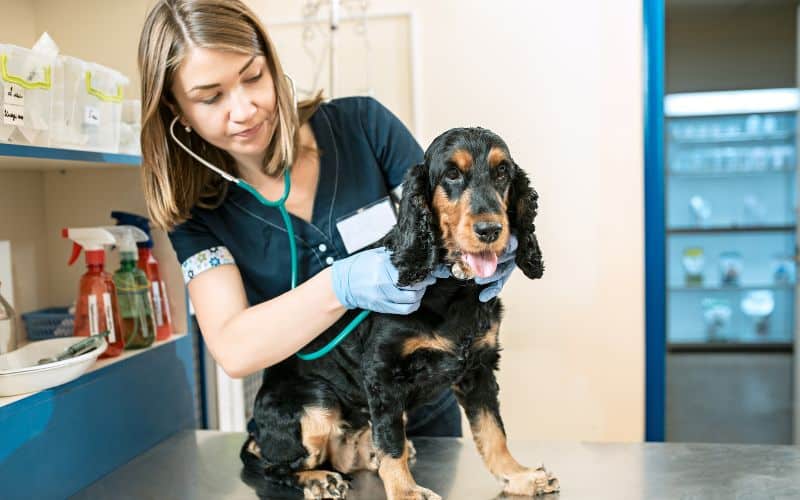
Preparing your cat or dog for a move to Spain involves several important steps, all of which are designed to ensure a smooth and hassle-free relocation.
- First and foremost, your pet must be microchipped with an ISO 11784/11785 compliant 15-digit microchip. This microchip serves as a permanent form of identification and is essential for travel to Spain and other EU countries.
- Additionally, your pet must be vaccinated against rabies, with the vaccination administered by a licensed veterinarian at least 21 days before the move. This timing is crucial to ensure that your pet’s immune system has sufficient time to respond to the vaccine and provide protection against rabies.
- Once your pet is microchipped and vaccinated, you’ll need to obtain an EU Pet Passport or the UK’s Animal Health Certificate for travel to the EU. This official document contains details of your pet’s microchip number, rabies vaccination and other relevant information, allowing for easy identification and verification during travel.
By completing these steps and obtaining the necessary documentation, you can ensure that your pet is fully prepared for the journey to Spain and meets all the requirements for entry into the country.
Planning Your Travel to Spain
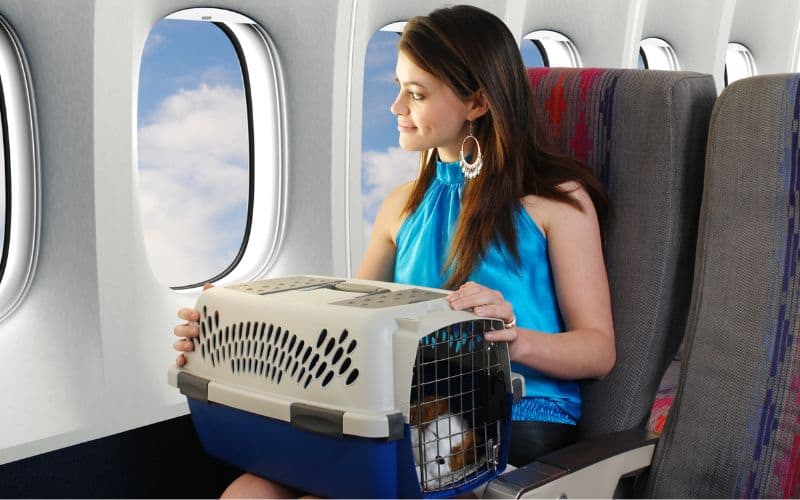
When you are planning your move to Spain with your pet, it’s important to consider various options to ensure a comfortable and stress-free journey for them. Depending on your specific circumstances and preferences, you may choose to travel by air, road or other means. Below are more tips on taking your pet to Spain.
Air Travel
Air travel can be convenient for long distances, but it’s essential to research airlines that offer pet-friendly policies and comfortable accommodations for pets in the cargo hold or cabin.
Road Travel
Road travel allows for greater flexibility and control over your pet’s environment, but it’s crucial to plan for frequent breaks, especially for dogs, and ensure that your pet is secured safely in a crate or harness to prevent injury.
You should also try to time your pet transportation to be inline with your house removal to Spain.
Acclimatising Your Pet
Regardless of the mode of travel, acclimatising your pet to a travel crate is essential for their comfort and safety during the journey.
- Start by introducing your pet to the crate gradually, allowing them to explore and become familiar with it before the trip.
- Place familiar bedding, toys, and treats inside the crate to create a positive association and make it a comfortable space for your pet.
- Practise short trips in the car or simulate travel conditions at home to help your pet adjust to being confined in the crate for extended periods.
- During the journey, provide plenty of water, regular bathroom breaks, and opportunities for exercise to keep your pet comfortable and happy.
Choosing a Pet-Friendly Airline
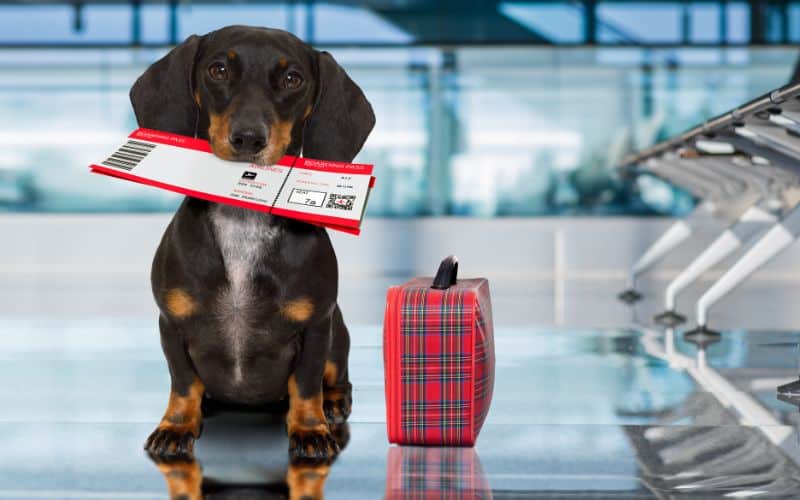
When choosing a pet-friendly airline for your cat or dog’s journey, you need to consider a variety of factors to ensure a safe and comfortable travel experience.
- Begin by researching airlines that have established pet-friendly policies and are known for their reliable handling of pets during travel. Look for airlines that offer options for both in-cabin and cargo travel, depending on the size and breed of your pet. Sometimes, small pets are allowed to travel in the cabin with you, while larger pets may need to travel in the cargo hold. Consider your pet’s size, breed and temperament when deciding on the most suitable option.
- When booking your flight, be sure to check the airline’s specific pet policies and any requirements or restrictions for pet travel. Some airlines have limitations on the number of pets allowed per flight, breed restrictions and specific crate size requirements. Ensure that you book your pet’s ticket well in advance to secure their spot and avoid any last-minute complications.
- Gather all necessary documentation, including health certificates, vaccination records, and any required permits for international travel.
- Prepare a sturdy and comfortable crate that meets the airline’s specifications, with enough space for your pet to stand, turn around and lie down comfortably. Familiarise your pet with the crate before the journey, and consider including familiar bedding or toys to help them feel more at ease during travel.
Arrival in Spain and Post-Travel Requirements
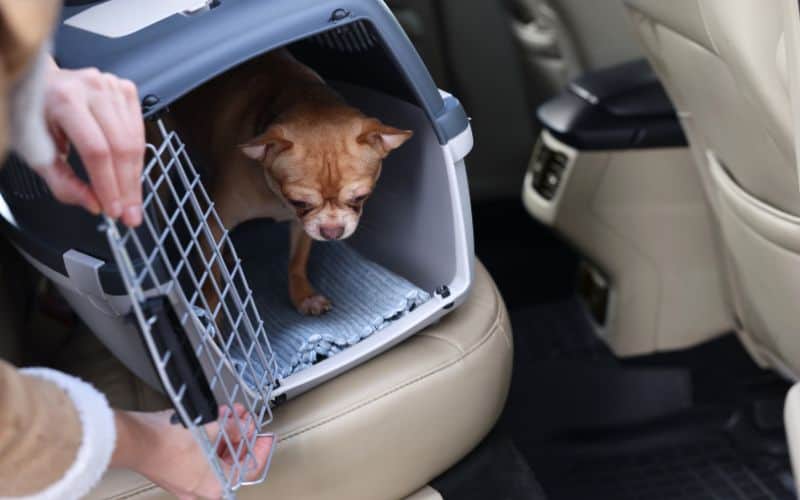
Once you have arrived in Spain with your pet, you will need to go through customs and veterinary inspections to ensure compliance with import regulations. Customs officials may request to see your pet’s documentation, including their microchip number, rabies vaccination certificate, and EU pet passport or the UK’s Animal Health Certificate for travel to the EU.
Veterinary officials may also conduct a physical examination of your pet to verify their health status and ensure they meet Spain’s entry requirements. Depending on the circumstances, additional inspections or documentation may be required, particularly for certain breeds or types of pets. After clearing customs and veterinary inspections, you might need to arrange for a health check by a local veterinarian in Spain. A local vet can provide any necessary vaccinations or treatments required by Spanish authorities and issue a health certificate if needed.
Depending on the region in Spain, you may be required to register your pet with local authorities, such as the town hall or municipal office. Registration typically involves providing proof of ownership, vaccination records, and other relevant documentation.
Settling in Spain with Your Pet

Helping your pet adjust to their new environment in Spain requires patience, care and attention to their specific needs.
Climate Considerations
Start by considering climate considerations and ensuring your pet has adequate shelter, water, and protection from extreme temperatures. If you’re moving from the UK to Spain’s warmer weather, gradually acclimate your pet to the higher temperatures by providing plenty of shade and keeping them hydrated.
Pet-Friendly Accommodation
When finding pet-friendly housing, look for accommodation that welcomes pets and offers suitable amenities, such as outdoor space or nearby parks for exercise. Introduce your pet to their new surroundings gradually, allowing them to explore at their own pace and providing reassurance and positive reinforcement along the way.
Local Pet Etiquette and Laws
Familiarise yourself with local pet etiquette and lead laws in Spain to ensure that you and your pet can navigate public spaces safely and respectfully. Keep your pet on a lead in public areas where required and always clean up after them to maintain cleanliness and courtesy.
Connect with Local Pet Services
Research and establish contact with local pet services, including veterinarians, groomers and parks, to ensure that your pet’s needs are met in their new home. Look for reputable professionals who can provide quality care and support for your pet’s health and wellbeing.
Begin Your Pet’s Journey to Spain Today
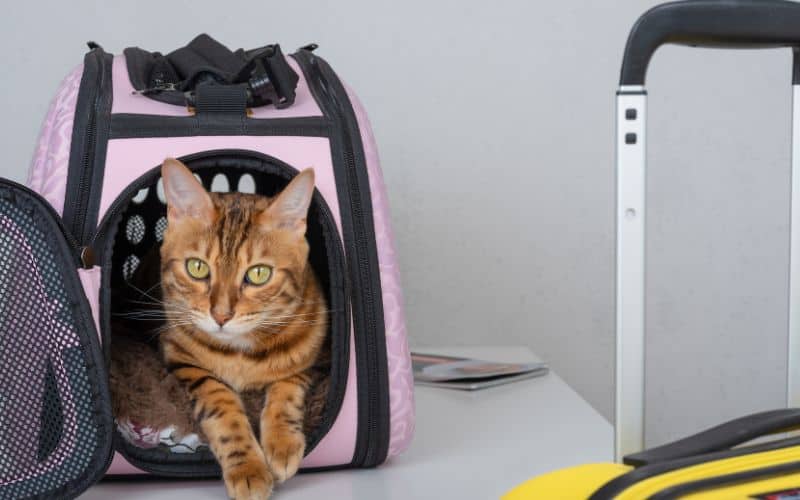
Successfully moving to Spain with a pet requires careful preparation and adherence to regulations to ensure a smooth transition for both you and your furry friend. Start by researching and familiarising yourself with Spain’s pet import regulations, and plan as far ahead in advance as possible. Schedule any necessary veterinary appointments well in advance of your move to ensure that your pet is up to date on vaccinations and meets all entry requirements, and don’t forget to consider your pet’s comfort travel.
Thorough preparation and compliance with regulations, you can ensure a successful and stress-free relocation for you and your beloved companion. To find out more about moving to Spain with your cat or dog, visit the official Spanish government and EU websites for the most current information on pet importation rules.
With your pet’s travel taken care of, it’s time to organise moving the rest of your belongings. Choosing the right removals service, such as United International Removals, ensures that the entire process is as simple and straightforward as possible. Contact us today to find out more.
